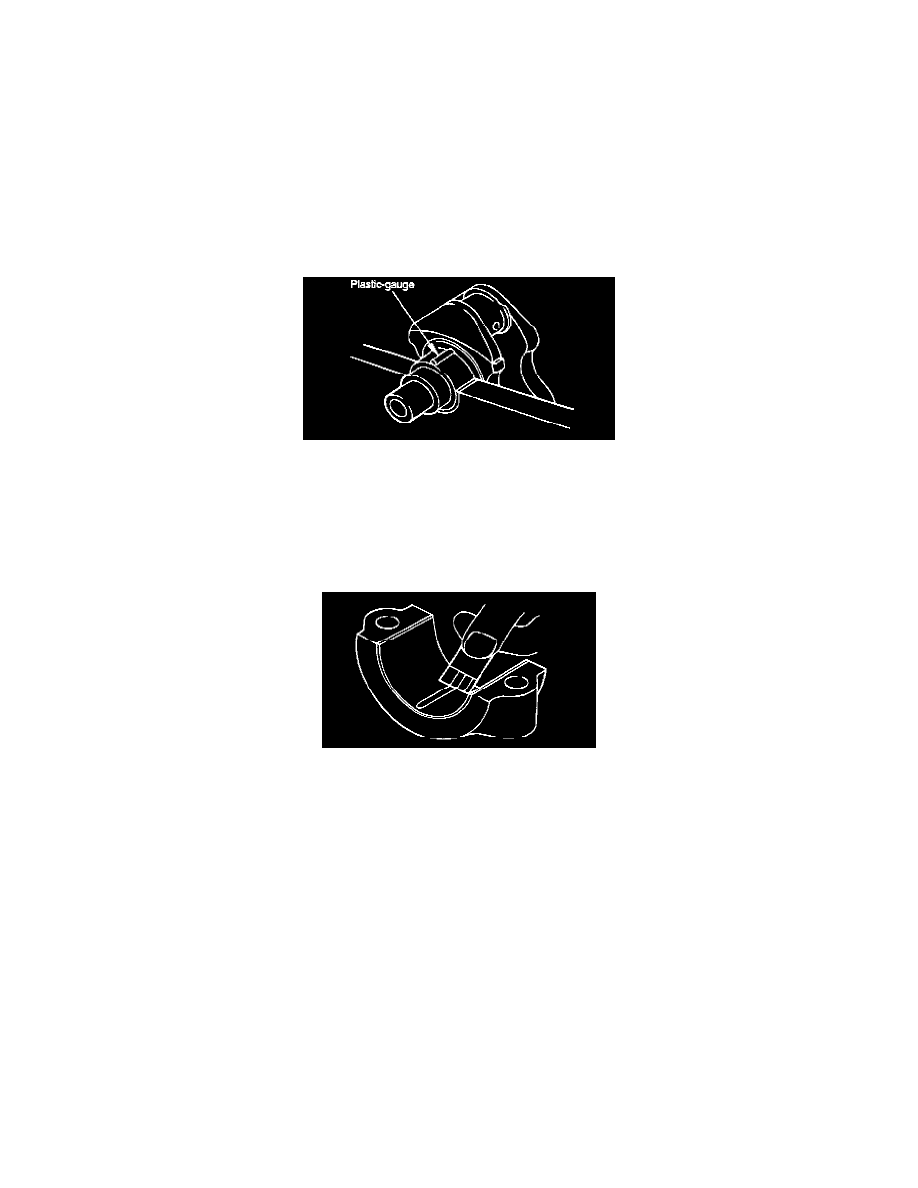Tiburon L4-1.8L (1997)

Crankshaft: Testing and Inspection
VISUAL INSPECTION
Check the crankshaft journals and pins for damage, uneven wear and cracks. Also check oil holes for clogging. Correct or replace any defective
part.
OIL CLEARANCE MEASUREMENT
Micrometer Method
Using suitable micrometer gauges, measure outside diameter of the crankshaft journal and the crank pin and inside diameter of the bearing. The
clearance measurement is the difference between the measured outside and inside diameters.
Plastigauge Method.
1. Remove oil, grease and any other dirt from bearings and journals.
2. Cut Plastigage to the same length as the width of the bearing and place it in parallel with the journal, away from oil holes.
3. Install the crankshaft, bearings, and caps.
4. tighten to 48 Nm (480 kg. 35 ft. lbs.) plus turn an additional 60-65°.
NOTE: During this operation, do not turn the crankshaft.
5. Remove the caps.
6. Measure the width of the Plastigage at the widest point using the scale printed on the gauge package, then refer to standard values below.
Standard Values
Oil Clearance:
Crankshaft main bearing, 0.028-0.048 mm (0.0011-0.0018 inch)
Service Limit, .0.1 mm ( 0.0039 inch)
Connecting rod bearing, 0.024-0.044 mm (0.0009-0.0017 inch)
Service Limit, .0.1 mm ( 0.0039 inch)
NOTE:
-
If the clearance exceeds the repair limit, the bearing should be replaced or an undersize bearing be used.
-
When installing a new crankshaft, be sure to use standard size bearings.
-
Should the standard clearance not be obtained even after bearing replacement, the journal should be ground to a recommended under size, and
a bearing of the same size should be installed.
PIN AND JOURNAL SIZE MEASUREMENT
